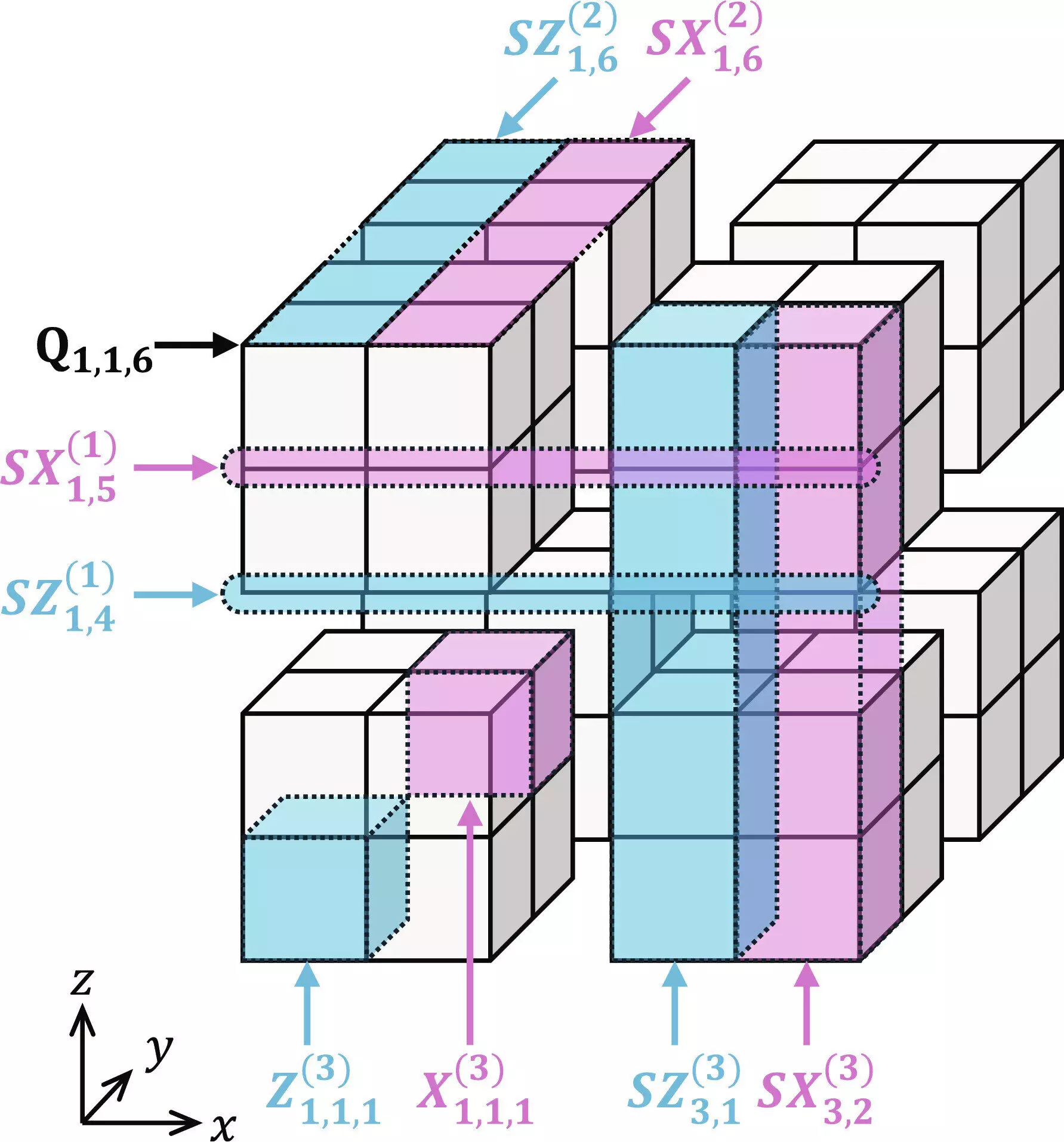Quantum computing has been an area of intense research and development in recent years, with the promise of revolutionizing traditional computing methods. In a recent study published in Science Advances, Hayato Goto from the RIKEN Center for Quantum Computing in Japan introduced a novel quantum error correction approach known as “many-hypercube codes.” This innovative method aims to address the limitations of current quantum error correction techniques and pave the way for fault-tolerant quantum computing.
Traditional quantum error correction methods involve encoding a single logical qubit onto multiple entangled physical qubits and using a decoder to retrieve the logical qubit. However, scalability has been a major challenge with this approach, as it requires a large number of physical qubits, leading to significant resource overheads. Additionally, existing methods often involve sequential setup of logical gates, resulting in inefficiencies in time.
In his research, Goto proposed the use of “many-hypercube codes” as a novel approach to quantum error correction. This method, based on high-rate concatenated quantum codes, introduces a unique geometric structure where logical qubits are represented as forming a “hypercube.” This geometric representation allows for a more efficient decoding process and enables parallel setting up of logical gates, akin to parallel processing in classical computers.
To maximize the performance of the many-hypercube codes, Goto developed a dedicated decoder based on level-by-level minimum distance decoding. This innovative decoding technique ensures high performance in error correction and logical gate setup. Unlike traditional methods, the many-hypercube codes permit logical gates to be executed in parallel, enhancing overall efficiency in fault-tolerant quantum computing.
The many-hypercube codes introduced by Goto demonstrate an impressive encoding rate of up to 30%, making them one of the most efficient codes for fault-tolerant quantum computing. Despite the high encoding rate, the performance of these codes remains comparable to conventional low-rate codes, marking a significant breakthrough in quantum error correction.
The development of many-hypercube codes represents a significant advancement in the field of quantum computing. The elegant geometric structure and innovative decoding techniques introduced by Goto have the potential to revolutionize quantum error correction and pave the way for highly parallel fault-tolerant quantum computing systems. As researchers continue to explore new approaches and methods in quantum computing, the many-hypercube codes offer a promising glimpse into the future of this rapidly evolving field.

